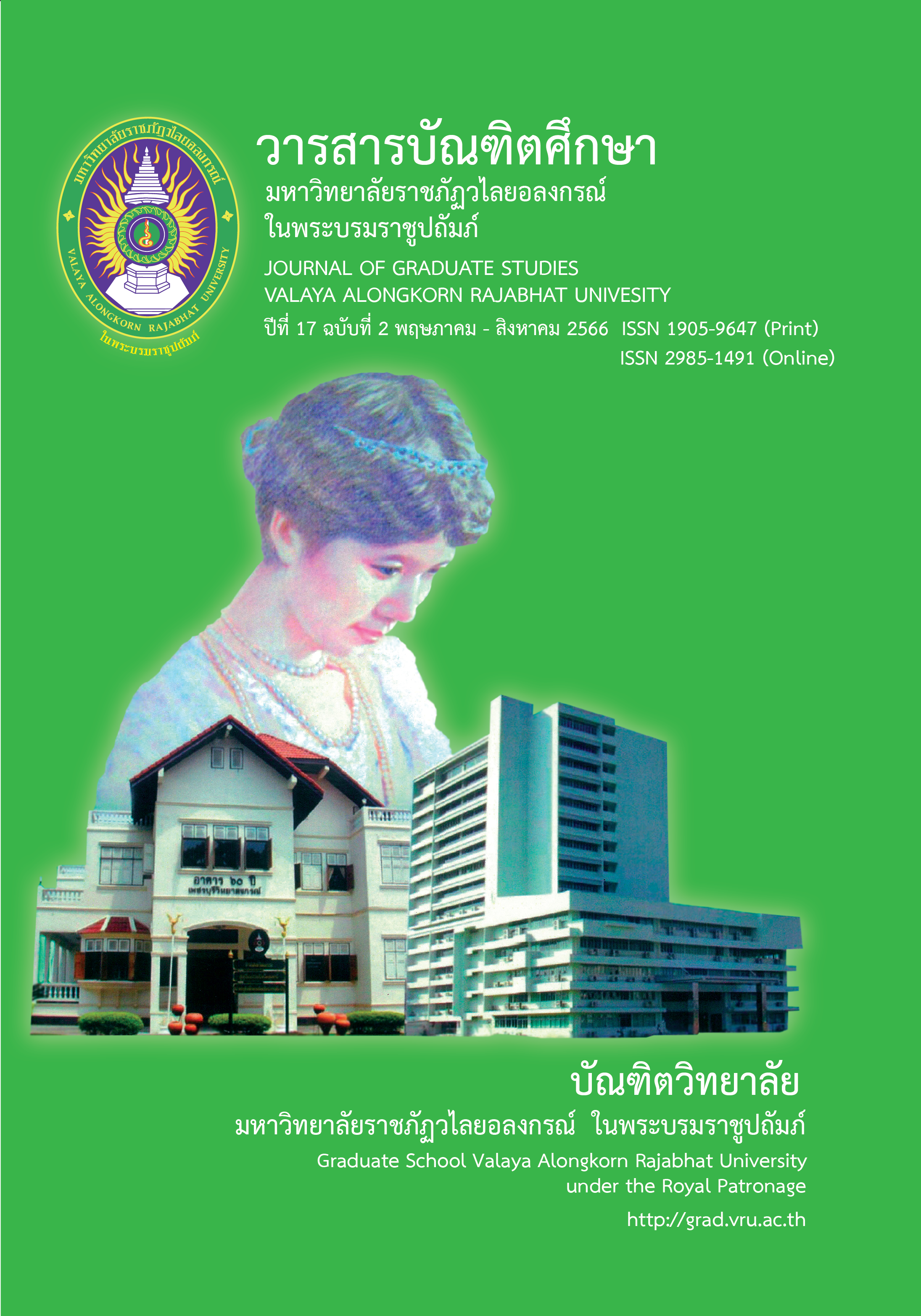THE EFFECTIVE OF USING A PROBLEM-BASED LEARNING WITH MARZANO AND KENDALL’S TAXONOMY FOR IMPROVING CRITICAL THINKING IN PRATHOMSUKSA 5 STUDENTS
Main Article Content
Abstract
The purposes of this research were to 1) compare the critical thinking scores before and after using the problem-based learning together with Marzano's theory of thinking, and 2) study the fifth-grade primary school students’ critical thinking by using the problem-based learning together with Marzano's theory of thinking. The sample consisted of 40 fifth-grade students of at Pichaya Suksa School, selected by a simple random sampling method. The tools used in the research included 1) a learning activity plan for the subjects “Wicha Muan Sinka”, “Ton Pen Tee Pheung Hang Ton” and “Khlong Lokanit”, 2) a critical thinking measurement form, and 3) a critical thinking evaluation form. The statistics used in data analysis included average, standard deviation, and t-score.
The research results showed that 1) after using the problem-based learning together with Marzano's theory of thinking, the students’ critical thinking scores were significantly higher at a level of .05; and 2) after using the problem-based learning together with Marzano's theory of thinking, the students had good critical thinking, with an average score of 46.98 and a standard deviation of 2.35.
Article Details

This work is licensed under a Creative Commons Attribution-NonCommercial-NoDerivatives 4.0 International License.
บทความทุกเรื่องได้รับการตรวจความถูกต้องทางวิชาการโดยผู้ทรงคุณวุฒิ ทรรศนะและข้อคิดเห็นในบทความวารสารบัณฑิตศึกษา มหาวิทยาลัยราชภัฏวไลยอลงกรณ์ ในพระบรมราชูปถัมภ์ มิใช่เป็นทรรศนะและความคิดของผู้จัดทำจึงมิใช่ความรับผิดชอบของบัณฑิตวิทยาลัย มหาวิทยาลัยราชภัฏวไลยอลงกรณ์ ในพระบรมราชูปถัมภ์ กองบรรณาธิการไม่สงวนสิทธิ์การคัดลอก แต่ให้อ้างอิงแหล่งที่มา
References
Areeda, P. E. (1996). The Socratic Method (SM) (Lecture at Puget Sound, 1/31/90), Harvard Law Review. 109(5), 911-922.
Barrow, H. S. (2000). Problem-based learning applied to medical education. Revised edition. Illinois: School of Medicine, Southern Illinois University.
Chuaytukpuan, T. (2013). Kār phạtʹhnā kickrrm thāng fis̄iks̄̒ nı radạb xudmṣ̄ụks̄ʹā doy chı̂ kār reīyn rū̂ bæb chı̂ pạỵh̄ā pĕn h̄lạk pheụ̄̀x nên krabwnkār khid cheing wiphāks̄ [A development of physics activities at higher education level employing problem-based learning to emphasize critical thinking process]. Doctoral Thesis, Ph.D., (Engineering Management), Srinakharinwirot University, Bangkok.
Dewey, J. (1993). How we think. New York: Health and Company.
Good, C. V. (1973). Dictionary of education. 3 ed. New York: Book Company.
Hilgard, E. R. (1962). Introduction to psychology. 3rded. New York: Marcourt, Brace & World Inc.
Hmelo-Silver, C. E. & Barrows, H. S. (2006). Goals and strategies of a problem-based learning facilitator. New York: Cambridge University Press.
Kahneman, D. (2011). Thinking, fast and slow. London: Macmillan.
Marzano, R. J. & Kendall, J. S. (2007). The new taxonomy of educational objectives. California: Corwin Press.
Munsethawit, S. (2004). lak læ withīkān sō̜n ʻān phāsā Thai [Principles and methods of teaching to read Thai]. Bangkok: Thai Watana Panich Press Co. Ltd.
Office of the Education Council. (2002). Nyobāy kār ṣ̄ụks̄ā phh̄u wạtʹhnthrrm k̄hxng nạkreīyn mạthym plāy nı pạttānī: Krnī ṣ̄ụks̄ā nı pạttānī prathes̄thịy [The multicultural education policies on high school student in Pattani: A case study in Pattani, Thailand]. Bangkok: VTC Communication Limited Partnership.
Savin-Baden, M. & Major, C. H. (2004). Foundations of problem-based learning. Buckingham: SRHE and Open University Press.
The Ministry of Education Thailand. (2008). H̄lạks̄ūtr kæn klāng kār ṣ̄ụks̄ā k̄hận phụ̄̂nṭ̄hān ph.s̄. 2551 (Ph.s̄. 2551) [The basic education core curriculum B.E. 2551 (A.D. 2008)]. Bangkok: Kurusapa Ladprao Publishing.
Torp, L. & Sage, S. (1998). Problem as association: problem-based learning for K-20. Alexandria. Virginia: Association for Supervision and Curriculum Development.
Wheatley, G. H. (1991). Constructivist perspective of science and mathematics learning. Science Education. 75(1), 9 - 21.


